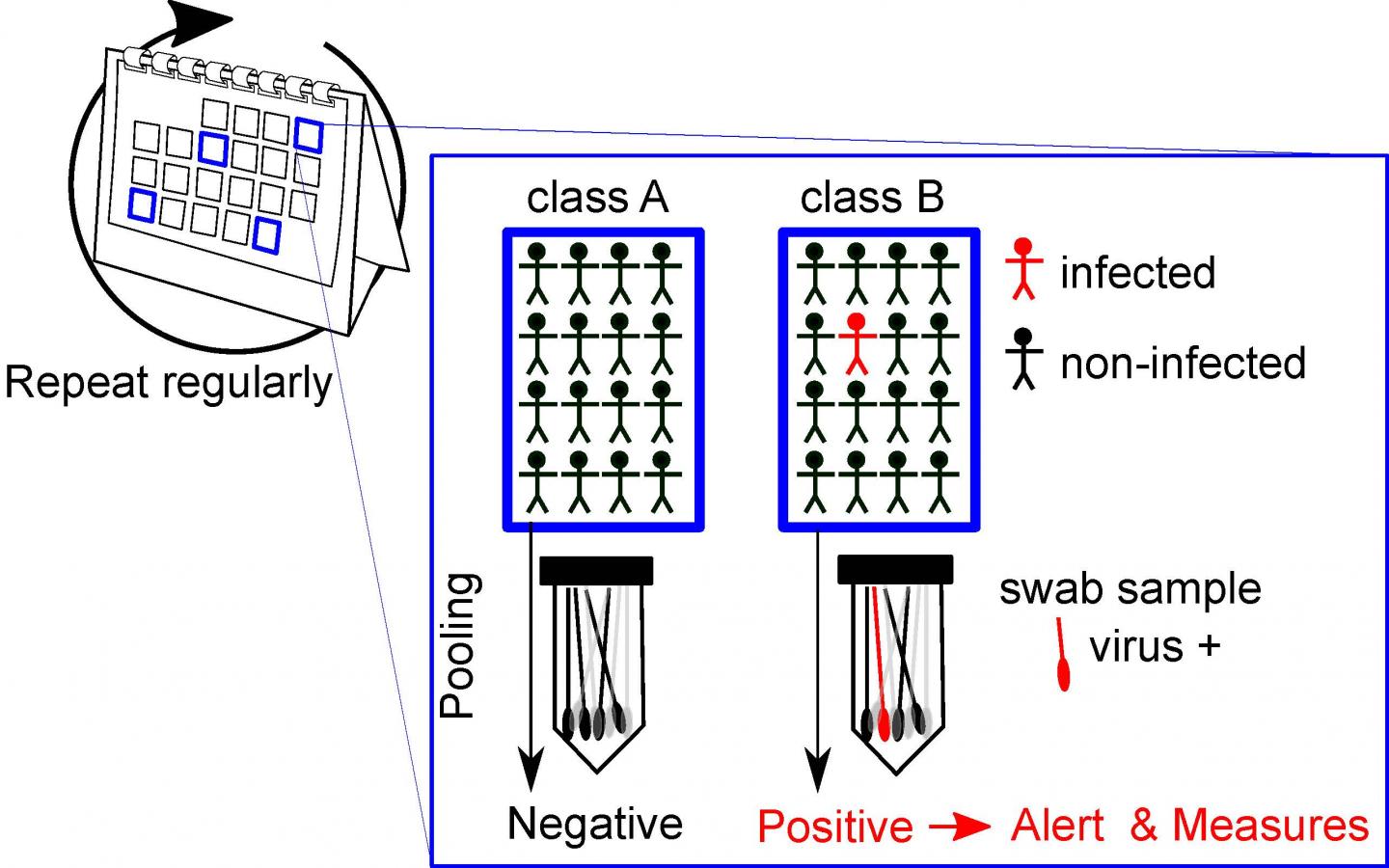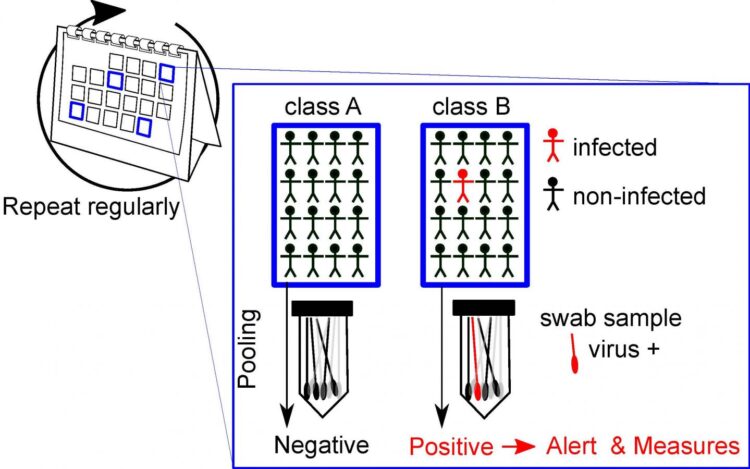Novel protocol draws on mathematical models that account for false-negative test results

Credit: Jean-François Rupprecht, the Centre for Theoretical Physics (CNRS/Aix-Marseille Université/Université de Toulon), 2021
Researchers have proposed a new quantitative strategy for pooling COVID-19 tests in order to monitor spread and detect outbreaks early within closed communities, such as nursing homes or universities. Vincent Brault of Université Grenoble Alpes in Grenoble, France, and colleagues present this method in the open-access journal PLOS Computational Biology.
In the face of limited supplies, some communities have achieved large-scale COVID-19 testing by grouping individuals’ saliva or nasal swab samples into pools. If a pool tests negative, all people in the pool receive a negative result. If it tests positive, follow-up testing shows who in that pool is positive. However, pooling can potentially dilute a positive sample, resulting in a negative result when someone in the pool is in fact positive: a false-negative result.
In the new study, Brault and colleagues used quantitative tools to examine the problem of false negatives in the context of closed communities. While previous research on pooling has often focused on minimizing the number of tests needed to pinpoint a positive case, this study focused on pooling as a way to track the presence of COVID-19 in a community.
The research team developed mathematical models that estimate the risk of false-negative results when individual samples are pooled for COVID-19 testing via the reverse transcription quantitative polymerase chain reaction (RT-qPCR) method. These models drew on large-scale clinical datasets on the concentration of SARS-CoV-2–the virus that causes COVID-19–within individual samples.
Based on the models, the researchers developed a quantitative pooled-testing protocol for determining the prevalence of COVID-19 within a closed community, such as a nursing home or university. While further refinement is needed to prepare the protocol for practical application, it could set the stage for earlier detection of outbreaks.
“We found that pooling is not only a promising method to break transmission chains at the earliest stage, but that it is also surprisingly efficient at estimating the level of viral penetration in communities,” Brault said. “We think pooled testing might become a broader tool to combat asymptomatic spread among youngsters at schools.”
###
Peer-reviewed; Simulation / modelling
In your coverage please use this URL to provide access to the freely available article in PLOS Computational Biology:
https:/
Citation: Brault V, Mallein B, Rupprecht J-F (2021) Group testing as a strategy for COVID-19 epidemiological monitoring and community surveillance. PLoS Comput Biol 17(3): e1008726. https:/
Funding: The authors received no specific funding for this work.
Competing Interests: The authors have declared that no competing interests exist.
Media Contact
PLOS Computational Biology
[email protected]





